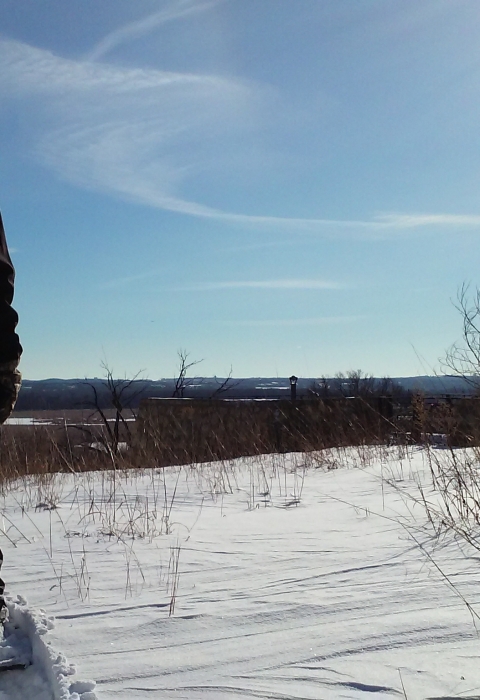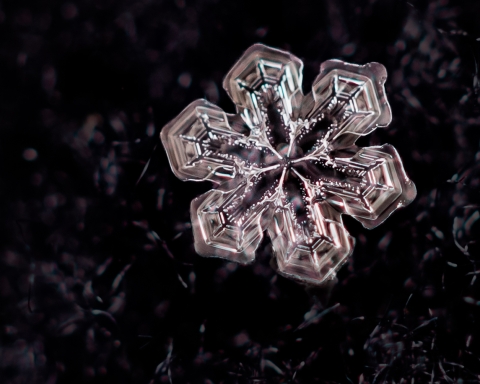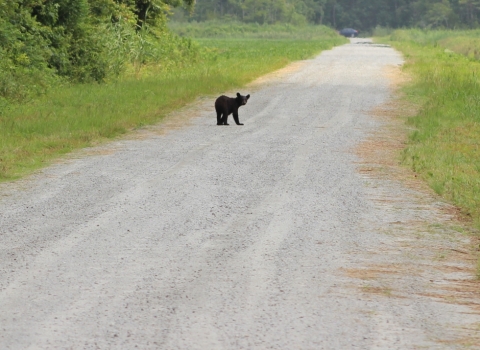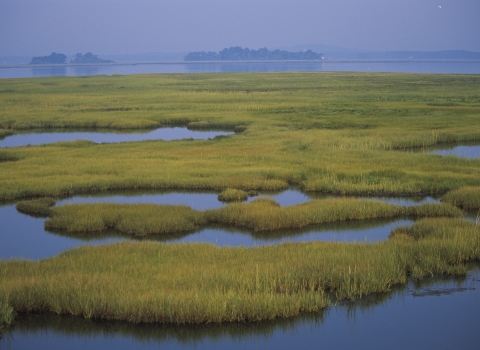As we look forward to snow covering Minnesota Valley National Wildlife Refuge, the winter season is the perfect time to slow down, get cozy and enjoy the quieter things in life. Among the various winter activities, snowshoeing stands out as a fun and unique way to explore this snowy wonderland. In this article, we'll take a closer look at what makes snow special and discover the joy of snowshoeing.
The Science of Snow
You've probably heard the phrase "no two snowflakes are the same." How is that possible? As they fall, each snowflake is intricately shaped by the temperature and humidity it encounters during its descent from the clouds. Snowflakes are formed when water vapor in the atmosphere condenses into ice crystals around microscopic particles in the air like salts, pollen or dust. Every snowflake has a different journey to the ground creating a shape unique to that snowflake.
The Sparkle of Snow
Have you ever wondered what makes snow glisten and sparkle in the sunlight? The surfaces of snow crystals are covered in tiny, reflective sides called facets that act like miniature mirrors. When sunlight hits these facets, it bounces off in multiple directions, known as total internal reflection, giving the snow its characteristic shimmer. This sparkling effect is not only visually stunning, it also adds another layer of magic to the winter landscape.
The Quietness of Snow
When rain falls you can hear each drop hit the ground, however when snow falls it’s a bit quieter. One of the enchanting qualities of snow is its ability to absorb sound, creating a serene and hushed atmosphere. When snow blankets the ground, it acts as a natural sound absorber, softening the noises in the environment. This phenomenon, known as acoustic insulation, adds an extra layer of tranquility to the winter experience. Snow-covered forests, hills, and valleys become sanctuaries of quiet, interrupted only by the gentle crunch of snowshoes.
Snowshoeing
Snowshoeing is a practice that dates back thousands of years. Indigenous peoples of the Arctic, North America, and Asia originally used snowshoes as an essential means of transportation and survival in snowy landscapes. Today, this historical activity has evolved into a popular recreational activity that allows individuals to traverse snowy terrains with ease.
The science behind snowshoeing lies in shoe design. Snowshoes distribute body weight over a larger surface area, preventing the wearer from sinking or punching into the snow. Modern snowshoes are typically made of lightweight materials like aluminum, plastic or rubber, featuring crampons and cleats for added traction on hills and icy surfaces.
Benefits of Snowshoeing
- Low Impact Exercise: Snowshoeing is a low-impact activity that provides an excellent workout without putting excessive strain on joints. It is accessible to people of all fitness levels, making it an inclusive winter activity.
- Versatility: Unlike skiing or snowboarding, snowshoeing requires minimal equipment and is easy to learn. It can be enjoyed on a variety of terrains, from flat, groomed trails to steep, backcountry slopes.When we have 4-6 inches of snow, toddler to adult-sized snowshoes are free to check out from the Bloomington Education and Visitor Center.
- Connection with Nature: Snowshoeing offers a unique way to connect with nature during the winter months, as you can explore trails and areas less traveled by foot, giving you the potential to see more wildlife. The more moderate pace of snowshoeing forces you to slow down and observe, making you more mindful of the nature around you.
Tips for a Safe and Enjoyable Snowshoeing Experience:
- Dress in Layers: Proper clothing is essential for staying warm and dry. Dress in layers to regulate body temperature and choose breathable fabrics to prevent sweating. A good place to start would be cotton base layers of long sleeves and leggings, a middle layer of a sweatshirt and pants then finally an outer layer of a coat and snow pants. Plus a hat and gloves!
- Stay Hydrated: Despite the cold temperatures, it's important to stay hydrated during physical activity. Pack water and remember to take breaks when needed.
- Know Your Terrain: Familiarize yourself with the trail conditions and difficulty level before embarking on a snowshoeing adventure. Be aware of potential hazards such as icy patches or uneven terrain. You can find information about the trails at Minnesota Valley here.
Whether you're a seasoned outdoor enthusiast or a beginner looking to explore the snowy landscapes, snowshoeing provides us with a magical and accessible adventure that connects us with the marvels of snow and winter. Strap on your snowshoes and step into the snow-covered trails. Snowshoeing is an experience that combines science, history, and the pure joy of winter exploration in a symphony of silence and sparkle.
To learn more about snowshoeing opportunities at the refuge, check out this video or go to our snowshoeing page. Hope to see you out on the trails!





